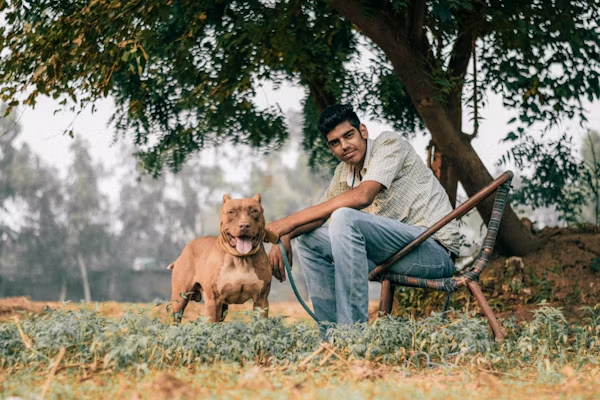Ensuring your dog gets enough exercise and playtime is crucial for their overall health and well-being. Just like humans, dogs need regular physical activity to stay fit, mentally sharp, and emotionally balanced. Whether you have a high-energy breed or a more laid-back companion, understanding how to properly exercise and engage with your dog can enhance their quality of life and strengthen your bond. This comprehensive guide covers various aspects of dog exercise and play to help you keep your furry friend active and happy.
Why Exercise and Play Are Important for Dogs
1. Physical Health
Regular exercise helps maintain a healthy weight, promotes cardiovascular health, and strengthens muscles and joints. Obesity in dogs can lead to a host of health issues, including diabetes, arthritis, and heart disease. Engaging in physical activity helps mitigate these risks and keeps your dog in optimal shape.
2. Mental Stimulation
Dogs are intelligent animals that need mental challenges to stay sharp and prevent boredom. Mental stimulation through play and problem-solving activities can reduce behavioral issues such as excessive barking, chewing, and digging.
3. Behavioral Benefits
Regular exercise can help manage behavioral problems by expending excess energy. A well-exercised dog is less likely to engage in destructive behaviors or experience separation anxiety. Playtime can also improve social skills and reduce aggression.
4. Bonding
Exercise and play are excellent opportunities for bonding with your dog. Engaging in activities together strengthens your relationship and builds trust.
Types of Dog Exercise
1. Walking
Walking is one of the simplest and most effective forms of exercise for dogs. Aim for at least 30 minutes to an hour of walking daily, depending on your dog’s age, breed, and energy level. Consider varying your routes to provide new sights and smells to keep walks interesting.
2. Running
For high-energy breeds like Border Collies or Labrador Retrievers, running can be a great way to expend energy. You can run alongside your dog, use a dog-friendly jogging stroller, or let them off-leash in a safe, enclosed area.
3. Playing Fetch
Playing fetch is a classic way to provide both physical exercise and mental stimulation. Use a ball, frisbee, or other toys your dog enjoys. Be mindful of your dog’s physical limits and avoid overexertion, especially in hot weather.
4. Swimming
Swimming is a low-impact exercise that is gentle on your dog’s joints, making it ideal for older dogs or those with arthritis. Many dogs naturally enjoy swimming, but ensure safety by using a doggy life jacket if necessary.
5. Agility Training
Agility training involves navigating through an obstacle course, which provides both physical and mental exercise. This can include jumps, tunnels, and weave poles. It’s a fantastic way to challenge your dog and improve their coordination.
6. Interactive Toys
Interactive toys, such as treat-dispensing puzzles, can provide mental stimulation and encourage problem-solving. These toys are especially useful for keeping dogs occupied indoors, particularly during inclement weather.
Playtime Activities
1. Tug-of-War
Playing tug-of-war with a rope toy can be a great way to engage with your dog. This game helps build strength and can be a fun way for your dog to exert energy. Just ensure to establish rules, such as “drop it” commands, to keep playtime controlled and enjoyable.
2. Hide and Seek
Hide and seek is a fun game that can stimulate your dog’s mind and encourage them to use their nose. Hide in different spots around your home or yard, call your dog, and reward them when they find you.
3. Training Sessions
Incorporating training into play can be both fun and educational. Teach your dog new tricks or reinforce basic commands through positive reinforcement techniques. Training provides mental stimulation and strengthens your communication with your dog.
4. Socialization
Allowing your dog to interact with other dogs and people is an essential part of their social development. Arrange playdates with other dogs, visit dog parks, or attend dog-friendly events to give your dog opportunities for positive social interactions.
Safety Tips for Dog Exercise and Play
1. Monitor Weather Conditions
Be mindful of weather conditions, especially during extreme heat or cold. Avoid exercising your dog during the hottest parts of the day, and ensure they have access to water and shade. In cold weather, consider a doggy coat to keep them warm.
2. Know Your Dog’s Limits
Different dogs have different exercise needs based on their breed, age, and health. Pay attention to signs of overexertion, such as excessive panting, limping, or lethargy. Adjust the intensity and duration of exercise based on your dog’s individual needs.
3. Use Proper Gear
For activities like running or hiking, ensure your dog is equipped with appropriate gear, such as a well-fitting harness and leash. Avoid using retractable leashes in areas with heavy traffic or potential hazards.
4. Check for Injuries
Regularly check your dog’s paws for injuries, such as cuts or debris, and inspect their coat for ticks or other parasites. Immediate attention to minor injuries can prevent more serious issues.
5. Hydration and Nutrition
Ensure your dog is well-hydrated before, during, and after exercise. Proper nutrition is also essential to support their activity level. Consult with your veterinarian to determine the best diet and feeding schedule for your dog’s needs.
Creating a Balanced Routine
1. Set a Schedule
Establish a regular exercise and play schedule to provide consistency for your dog. Regularity helps dogs understand when to expect activity and can improve their overall behavior.
2. Incorporate Variety
Mix up your dog’s routine with different activities to prevent boredom. A combination of walking, running, playing, and training will keep things interesting for your dog and provide well-rounded exercise.
3. Adapt as Needed
Be flexible and adapt your routine based on your dog’s changing needs. Puppies, adult dogs, and seniors all have different exercise requirements. Adjust the intensity and type of activity to suit their age, health, and energy levels.
Conclusion
Regular exercise and play are vital components of a happy, healthy dog. By understanding your dog’s exercise needs and incorporating a variety of activities into their routine, you can help them maintain physical fitness, mental sharpness, and emotional well-being. Remember to prioritize safety and adapt activities to suit your dog’s individual needs, and you’ll be rewarded with a joyful, well-balanced companion.
Investing time in your dog’s exercise and play not only enhances their quality of life but also strengthens the bond you share. So grab a leash, some toys, and get ready for fun-filled adventures with your furry friend!











Leave a Reply